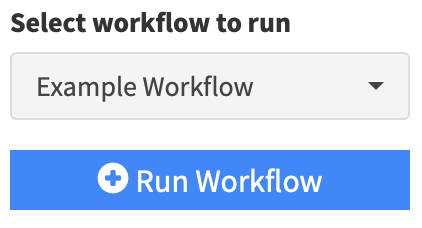Introduction
Sometimes it is useful to be able to preload content into the app. This can take a few forms. In the most basic you may want to save the current analysis and reload it at a later date. Often you may have standard analyses that you want to run when a dataset of a particular format has been loaded. Lastly, you may want to set the app up so that it starts with a bunch of preloaded content so the user can play around with it. The following will outline how to do each of these tasks.
Saving and loading an analysis
This is the most straightforward method but it is mentioned here because it is the most likley way a user would set up the other two scenarios below. You can load a dataset and populate any of the modules with content like normal. Then you would go to the save analysis portion of the app (under App State) and just select save. This should push a zip file to you with the current analysis saved inside of ti. To reload this analysis you can load the zip file and it should repopulate the analysis for you. The key here is to refresh the app so it is “empty” before loading it.
If you open that zip file you will notice a file called
preload.yaml along with your original dataset. This yaml
file is needed below to create workflows and prelaod the app.
Creating automated workflows
To create automated workflows you need one or more preload files. You will deploy these along with the app. The first thing you will need to do is create a copy of the app (or your own app) in the deployment directory. You can do this using this command
file.copy(from = system.file(package="formods","templates", "FM_compact.R"),
to = "App.R")Certain features of the app behave differently depending on whether it is running locally or deployed on a server. If you want to deploy the app you need to tell the App it is deployed. This is done by creating an empty file named DEPLOYED in the same directory as the deployed app file. This is optional.
file.create("DEPLOYED")If you look at the top of the App.R file you created you
will see something like this:
formods.yaml = system.file(package="formods", "templates", "formods.yaml")
ASM.yaml = system.file(package="formods", "templates", "ASM.yaml")
UD.yaml = system.file(package="formods", "templates", "UD.yaml")
DW.yaml = system.file(package="formods", "templates", "DW.yaml")
FG.yaml = system.file(package="formods", "templates", "FG.yaml")These are the configuration files for each module. The workflow
information is stored in the formods.yaml file. You’ll need
to create a local version you can edit and fill with your workflow
information.
file.copy(from = system.file(package="formods", "templates", "formods.yaml"),
to = "myformods.yaml")To make your app use this file you need to edit it and change the
assignment of the formods.yaml object:
When you alter these configuration file locations it is important to give the full path.
If you edit the file myformods.yaml you will see a
section called workflows:
workflows:
example:
group: "Examples"
desc: "Example Workflow"
# Set to true if the workflow requires a dataset
require_ds: TRUE
# this can contain an aboslute path as a string or R evaluable code
preload: "file.path('.', 'example.yaml')"This is be a pre-populated example showing how to creaet a workflow.
You can create as many workflows as you want here by giving them
different names from example above (copy/paste example, change the name,
and alter the details). The group option will allow you to group your
workflows together in the selection form. The description
(desc) is a verbose description of the workflow and
require_ds indicates if the workflow depends on a dataset.
This should probably be true. The preload field points to
the yaml file that has the workflow details. This is the
preload.yaml file you will extract from the zip file
created when saving an analysis. You need to copy that file to the
deployment directory and rename it to whatever is referenced here
(e.g. preload.yaml to example.yaml).
Now you should have the following files in the directory:
-
App.R: App file edited to use the custom formods configuration file. -
DEPLOYED: Empty file indicating the app is deployed. -
myformods.yaml: Customized formods file to indicate the available workflows -
example.yaml: Example workflow.
If you set this up correctly and it finds at least one workflow yaml file specified it should create a workflow selection element and button to run the selected workflow in the data upload section of the app like this:

Preloading the app with content
First you need to unzip the contents of the save analysis into a
directory. Next, in the same directory where you unziped the contents of
the analysis, you need to create an app file and also create the
DEPLOYED file if you want to deploy the app. This will use the test app
that ships with formods:
file.copy(from = system.file(package="formods","templates", "FM_compact.R"),
to = "App.R")
file.create("DEPLOYED")Now when you run the app, the preload file will be detected and the contents will be loaded into the app. This is done with the following code in the app:
if(file.exists("preload.yaml")){
shinybusy::show_modal_spinner(text="Preloading analysis, be patient", session=session)
res = FM_app_preload(session=session, sources="preload.yaml")
shinybusy::remove_modal_spinner(session = session)
}